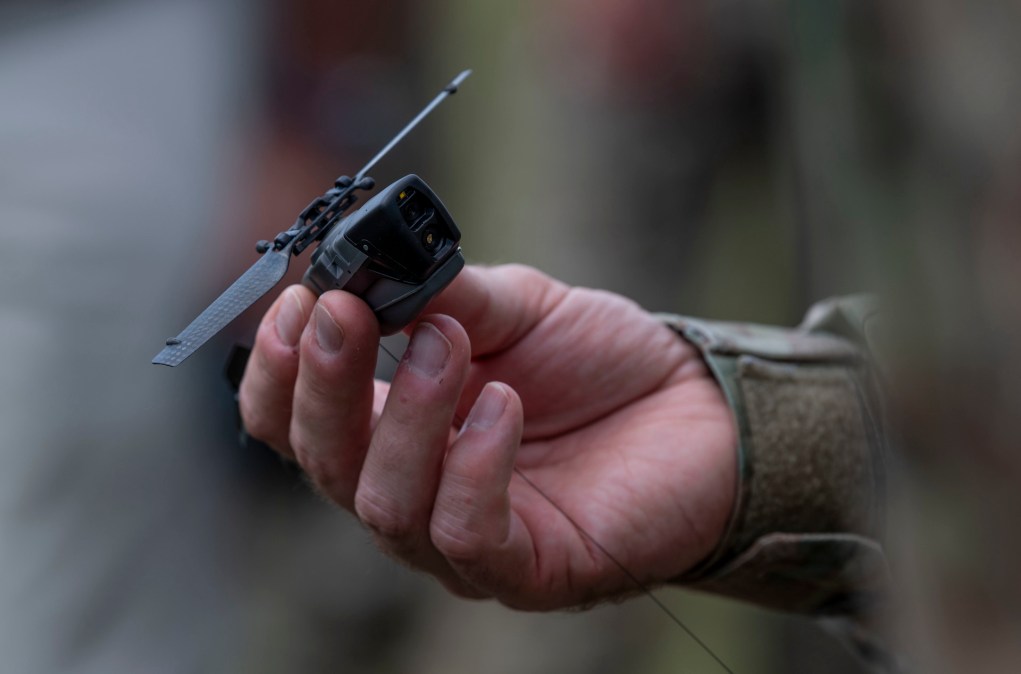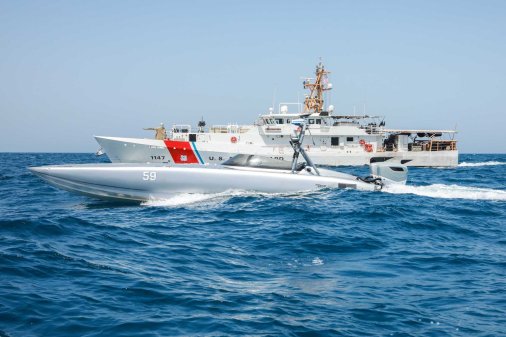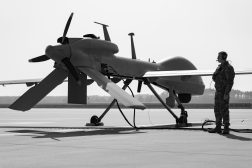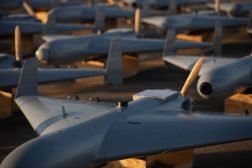SOCOM looking for ‘multidomain’ micro drones that can operate in the air and underwater

The acquisition, technology and logistics arm of U.S. Special Operations Command is seeking micro drones that could be launched from a variety of platforms and operate in multiple domains — including in the air and underwater.
A special notice released Thursday told industry that SOCOM’s program management office for remote capabilities is requesting feedback to help identify Group 1 uncrewed aerial systems that could be evaluated next year.
Group 1 drones are at the small end of the spectrum of UAS that the Defense Department uses.
Required characteristics for the platforms that the command is interested in, include the ability to perform multiple mission sets, such as intelligence, surveillance, reconnaissance or “kinetic,” according to the request for information.
The term “kinetic,” in U.S. military parlance, generally refers to the ability to strike targets.
“UAS should include modular and durable components that can be replaced, repaired, or configured for specific mission sets … by a trained SOF operator in 30 minutes or less, preferably without tools. Propulsion should be electric, or hybrid based,” the document noted.
Although the drones would be expected to connect to a ground control station, SOCOM also has technology requirements to enable autonomy.
“UAS hardware and software, both on the aircraft and on the ground control station, should maintain a modular open systems approach that allows for the hosting and integration of government developed software for mission planning, command and control, computer vision, autonomy, and collaborative autonomy capabilities, which enable the UAS to work independently and/or together with humans on or off the loop. Government software should be able to interface with the aircraft autopilot, aircraft data bus(es), navigation systems, sensors/payloads, etc. Additionally, the government software should be able to utilize or disable all safety, automated, and autonomous functions organic to the system as delivered by the vendor,” officials wrote.
The drones must also be capable of operating in congested and contested RF and Global Navigation Satellite Systems environments, the document noted.
Other required characteristics for the uncrewed aerial systems include the ability to operate at ranges of 0.5 nautical miles and beyond for at least 12 minutes at standard sea level while equipped with an electro-optical/infrared sensor. They must also be able to cruise at 15 knots indicated airspeed or faster, and be able to launch, operate and recover in daytime and nighttime — including in adverse weather conditions, according to officials.
The list of “highly desired” traits outlined in the document includes an onboard accelerated processing unit with reserved compute power or an independent graphics processing unit to support government-developed AI, autonomy and software.
Officials are also keen on “multidomain” capabilities, including drones that can both fly and go underwater.
“Ability for the UAS to operate beyond its primary role in a maritime environment as an Uncrewed Underwater Vehicle is highly desired. A UAS capable to take off/launch and land/recover from platforms operating across multiple environments to include ground, water/maritime (fresh, salt, and brackish), etc. is highly desired; if intended to land in the water, the UAS should remain afloat till recovery or provide other novel low visibility recovery capability. Ability of UAS to take off/launch and land/recover from multiple SOF operational platforms (ground, aircraft, and maritime vessels) is highly desired,” officials wrote.
SOCOM is also interested in drones that can use multiple control modalities aside from ground control stations, such as first-person view (FPV), augmented reality, or gesture control, the document noted.
Responses to the RFI are due Dec. 13.






